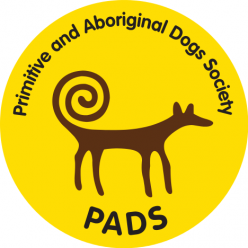The New Guinea Dingo or Singing Dog (Canis dingo hallstromi)
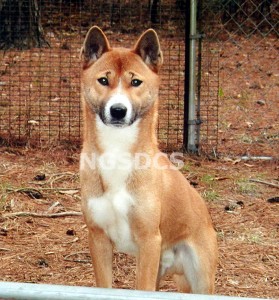
New Guinea, the second largest island in the world, has mountain ranges tall enough to have permanent glaciers. Many remote areas have never been fully explored. The mountains from about 2,000–4,700 m (6,000 to 11,000 feet) are home to the wild New Guinea dingo (NGD), also called the New Guinea singing dog, a named given because of its chorus howl. The NGD chorus howl is different from other canids’ communal howls because they are not merely all howling at the same time, but appear to be actually coordinating their howls, counterpointing each other, and creating what are known in human singing as “overtones” or “ringing chords” in which voices combine creating an added note.
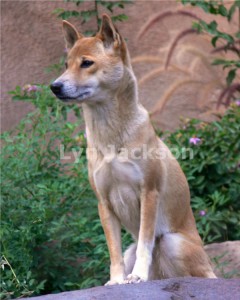
Dating from DNA indicates the NGD became separated from the domestic dog at least 5,000 years ago. However, dating from DNA sequences is very questionable and it is possible they came to New Guinea with the first people some 40,000 years ago before dogs were fully domesticated. Because the other ancient and closely related wild dog, the Australian dingo, has hybridized extensively with imported domestic dogs, the more isolated NGD is the purest remaining example of early dog, perhaps a living relic from the Stone Age. The NGD could be different enough from other dogs to consider it a unique species, but this can only be determined from further study of both the captive and the wild NGDs.
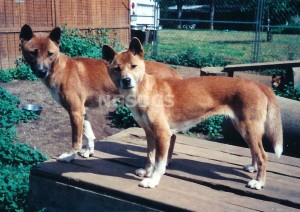
Almost all we know about NGDs has come from the study and observation of captive ones. There are about 300 captive NGDs today, all descended from a few brought out of Papua New Guinea (1955) (PNG) and West Papua (1970’s). From the captives we learned about the completely unique NGD breeding season and behaviors. However, it remains to be proven that the wild NGDs have the same unique characteristics. This proof would be the first step toward NGD conservation, which could be as simple as forbidding domestic dogs into areas reserved for NGDs to prevent hybridization. The local landowners would be caretakers and protect the wild NGDs, which, unlike Australian dingoes, are not in conflict with humans over livestock or territory.
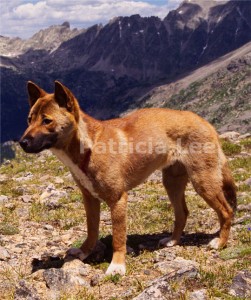
Extremely little is known about the wild population, except that there are still wild NGDs in some remote places. Other than a few areas with reported sightings in the last decade, no one knows where they remain. There is no information about how many of them exist, if the population is shrinking, or how they fit into the New Guinea ecology. Locals report that they see and hear fewer NGDs compared to the “old days,” that there used to be more in the past. The domestic dog population of PNG has grown rapidly the last few decades, and NGD habitat is being disturbed, perhaps reduced, by ever-increasing levels of exploration for natural resources, deforestation, road building, and mining. Together, more domestic dogs around NGD habitat and less habitat available result in greatly increased chances of NGDs breeding with domestic dogs. If they are going to be saved, it must start soon or we will have lost the last remaining chance to study such an isolated pure ancestral-type dog.
We do know that the NGD is the top land predator of New Guinea and that their prey includes cuscus (an opossum-type marsupial), echidnas, and birds. They use natural rock and root formations as resting dens and may be seasonally migratory within their territory. They are always reported to be extremely shy of humans and difficult to observe for more than a few seconds as they run away. The wild NGDs reported have all had red/brown or black hair. That is the extent of our information. Everything we learn on the first few expeditions to study the wild NGDs will be vitally important completely new information.
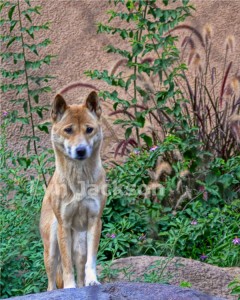
Studies of the captive NGDs have shown they have many unusual and unique traits in behavior and physiology. They are the only canid in which females can have up three repeated cycles a few weeks apart during an annual breeding season which starts in July. Unlike all other canids from foxes to wolves, NGDs do not have the “play bow” solicitation in which the front end is lowered and rear elevated to invite play. One unusual behavior is the NGD “head toss” in which they bend their neck and rotate their head around, indicating they want something. They have two blood proteins that match coyote and red fox rather than domestic dog or wolf. If they have natural-type pens with suitable dirt, the females dig shallow dens to have their pups in, even if a nice dog house is available. Males will regurgitate for their pups and help guard them. However, they are not pack animals. Same-sex adults are highly aggressive toward each other in captivity, so it is assumed in the wild they live in mated pairs that defend a territory.
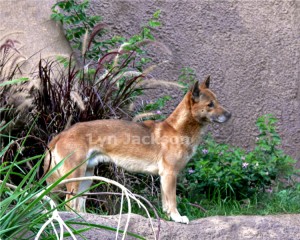
All of the living captives today have descended from only five unique ancestors, so they are highly inbred. While in general NGDs are still healthy and long-lived, unless new genes can be brought in from the wild in the near future the captive population will eventually die out. The New Guinea Singing Dog Conservation Society hopes to find funding for field studies of the wild NGDs, and eventually to be able to bring a few more out of the wild to increase genetic diversity in the captive population. The captive NGDs are popular as educational outreach specimens in many zoos because unlike most other wild canids, when properly trained and socialized as puppies they are not fearful and are trustworthy with people. It is important that the captive population is maintained as they act as ambassadors for their wild cousins.
Janice Koler-Matznick, MS, ACAAB
The New Guinea Singing Dog Conservation Society
New Guinea Singing Dog Conservation Society (NGSDC) on Facebook
